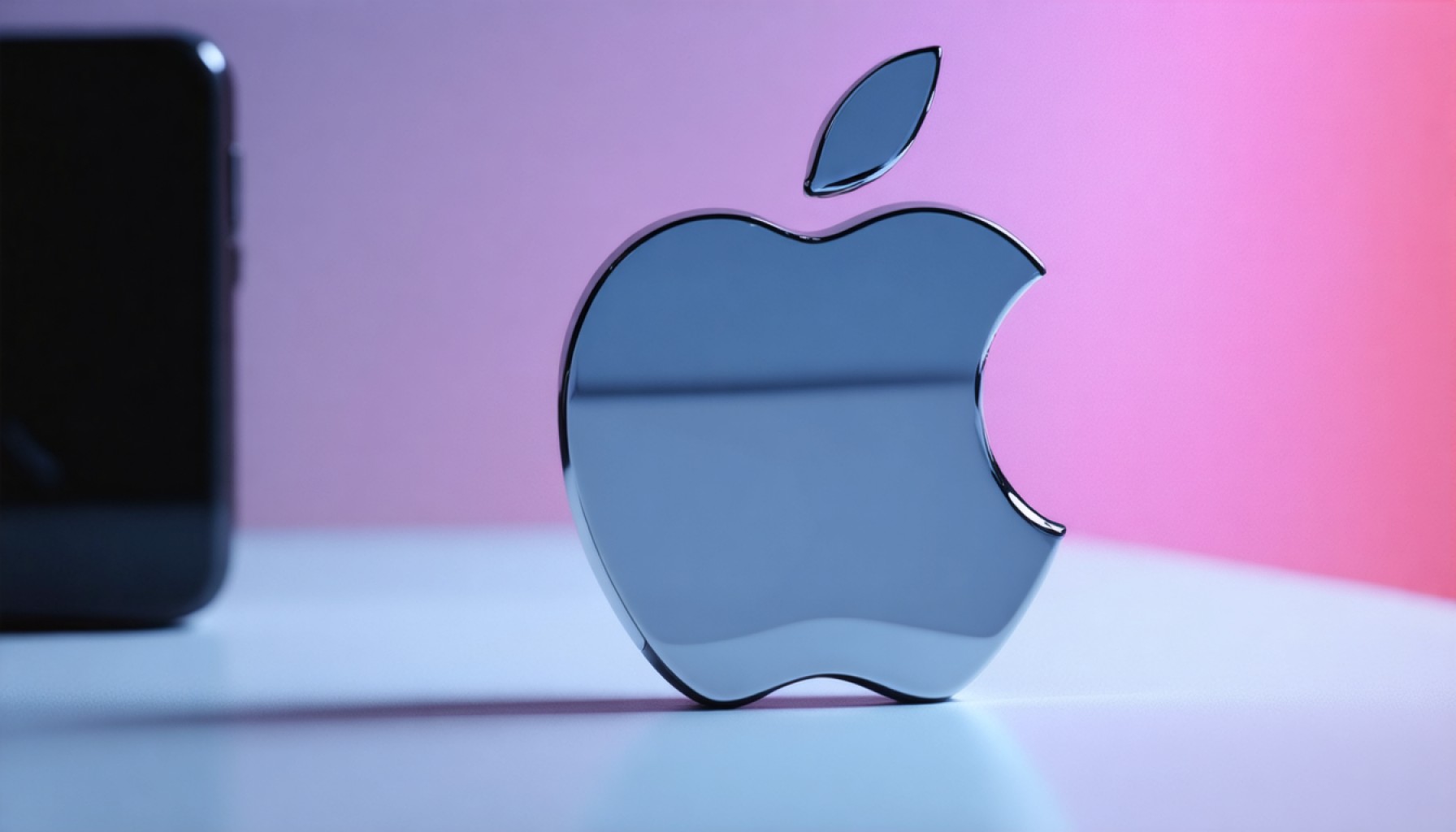- Apple Inc. is grappling with fierce competition in the AI arena, facing challenges from nimble startups like DeepSeek.
- DeepSeek’s V3 large language model, released on Hugging Face, showcases superior efficiency and problem-solving capabilities, sparking disruption concerns.
- The success of open-source AI models emphasizes potential upheaval in the landscape, pressuring established giants like OpenAI and Anthropic.
- Apple faces declining iPhone sales in critical markets due to lagging AI integration, threatening its technological leadership.
- Analysts remain cautiously optimistic, predicting potential realignment through strategic Apple pivots, though risks persist from delayed AI innovation.
- Fast-moving AI entities are setting the pace, challenging industry leaders to adapt or risk obsolescence in a rapidly evolving market.
- Hedge fund activity highlights burgeoning opportunities among agile AI innovators, suggesting potential for swift market shifts.
Apple Inc., a titan of modern technology with a legacy defined by innovation, now finds itself in an increasingly competitive arena where artificial intelligence is king. The ascent of nimble startups like DeepSeek, which recently launched an upgraded V3 large language model boasting unmatched problem-solving capabilities, has added intense pressure. This AI marvel, known as DeepSeek-V3-0324, sets a new standard in efficiency and accuracy, fueling waves of excitement—and concern—across Silicon Valley and Wall Street.
The strategic release of DeepSeek’s latest version on Hugging Face, a prominent AI development platform, showcases its ambition to tighten the grip on the burgeoning AI market. The enhanced model, with its superior reasoning and coding prowess, underscores the shift towards open-source solutions that can outshine established players with far leaner resources. This emergent trend alarms giants like OpenAI and Anthropic, prompting experts like Kuittinen Petri from Häme University of Applied Sciences to speculate on the potential disruption these models could introduce.
Yet, while DeepSeek celebrates the strides made with a fraction of the resources that fuel major AI labs, Apple Inc. faces its own challenges. Analysts are beginning to sound alarms over Apple’s standing in the AI realm and its broader technological strategies. While the iPhone series remains iconic, its appeal is waning in vital markets like China, where fierce Android competitors have gained ground. Jefferies analyst Edison Lee flagged concerns over a precipitous decline in iPhone sales, a symptom of Apple’s lagging AI integration, which threatens to alienate consumers seeking revolutionary tech experiences.
Despite speculative headwinds and sales slumps, optimists like Wedbush’s Dan Ives argue for Apple’s resilient future. Observing long-term growth trajectories, some maintain that Apple’s strategic pivots and product evolution could eventually realign its market dominance. Yet, Ives concedes that delays in AI innovations could erode customer loyalty, fostering market vulnerability.
Fast-moving AI entities such as DeepSeek exploit open-source technologies to quickly iterate and innovate. Math Olympiad champion Jasper Zhang highlights this as a hallmark of future success in the AI arms race. His assertion that open-source models could ultimately prevail channels the broader investment sentiment: in a landscape shifting towards rapid adaptability and robustness, traditional industry leaders must evolve or risk obsolescence.
Investors scanning the AI horizon see opportunity sprouting from the fertile grounds of innovation. Hedge fund activity, often a bellwether of market trends, supports this view by spotlighting underdog stocks poised to outpace stalwarts like Apple, which sits sixth on the list of AI stocks disrupting Wall Street. As portfolios diversify in response to the dark horses of tech, the focus sharpens on identifying those agile players capable of quick returns in a world where speed gears success.
The AI revolution is not just a technological shift—it’s a litmus test for survival in a crowded marketplace replete with game-changers. For Apple, the path forward hinges on a recalibration of priorities and the audacity to integrate and innovate at the pace dictated by modern market dynamics. As new players rewrite the rules, giants must learn to dance, lest they stumble.
Is Apple Falling Behind in the AI Race? Key Insights and What It Means for the Future
The Challenge Apple Faces in the AI Revolution
Apple Inc., traditionally recognized for its pioneering ethos, now confronts an evolving landscape where artificial intelligence (AI) is at the forefront. With the emergence of startups like DeepSeek, which recently launched its advanced AI model, DeepSeek-V3-0324, the competitive heat has intensified. This AI system, renowned for its efficiency and accuracy, signifies a growing trend toward open-source AI solutions that could potentially outperform well-established brands.
AI Market Dynamics and Trends
The release of DeepSeek’s latest model highlights a broader shift occurring within the AI industry. OpenAI’s and Anthropic’s notable presence underscores the need for established corporations like Apple to innovate and integrate AI technology into their platforms. The use of platforms like Hugging Face for model releases illustrates the role of open-source frameworks in accelerating development cycles.
Moreover, as noted by Kuittinen Petri from Häme University of Applied Sciences, the disruption caused by newer, agile AI entities could pressurize traditional models, leading to a re-evaluation of strategic approaches to AI development and implementation.
Apple’s Strategic Challenges and Market Position
While Apple’s iPhone remains an iconic product, the competitive landscape, particularly in markets like China, has led to declining sales. Jefferies analyst Edison Lee points to the importance of AI integration as a deterrent to losing consumer interest. The inability to keep pace with AI-driven innovations risks Apple’s market share, especially as competitors deliver increasingly innovative features.
However, analysts like Dan Ives from Wedbush maintain optimism regarding Apple’s long-term growth. Despite current challenges, there’s a belief that Apple’s capacity for strategic pivots and product evolution could eventually reaffirm its market dominance. That said, delays in AI advancements pose risks to customer loyalty and market stability.
Pros and Cons of Open-Source AI Development
Pros:
1. Rapid Innovation: Open-source models allow for faster iterations and improvements, as seen with DeepSeek’s approach.
2. Community Collaboration: Leveraging the collective input of a global developer community accelerates problem-solving capabilities.
3. Cost Efficiency: Reduced expenses compared to proprietary AI solutions make open-source models attractive, particularly for startups.
Cons:
1. Security Concerns: Open-source platforms may be susceptible to vulnerabilities and require robust security measures.
2. Support and Maintenance: Depending on community-driven development can lead to inconsistent updates and bug fixes.
How Apple Can Recalibrate in the AI Era
1. Embrace Open-Source Collaborations: To retain and grow its customer base, Apple could consider integrating more open-source solutions, enhancing its AI offerings and applications.
2. Strengthen R&D Investments: Amplifying investments in AI research and development will be crucial in fostering innovation leadership.
3. Strategic Partnerships: Partnering with cutting-edge AI firms could provide Apple with valuable insights and access to leading technologies.
4. Enhanced User Experience: Continually enhancing the user experience through AI-driven innovations will attract tech-savvy consumers seeking advanced features.
Conclusion: The Path Forward
For Apple and similar tech giants, the AI revolution is not just a necessity but an opportunity to redefine their technological prowess. By adopting a flexible and innovative mindset, Apple can transform potential challenges into growth drivers, reaffirming its position as a leader in the tech industry. The need to integrate AI at the core of its strategy is not just ideal; it’s imperative for survival and success in this rapidly shifting tech ecosystem.
For more insights on technological innovations and market trends, visit Apple and stay informed about their journey in addressing these challenges head-on. Additionally, exploring platforms like Hugging Face will provide you with a comprehensive understanding of the pivotal role of open-source AI in today’s world.










